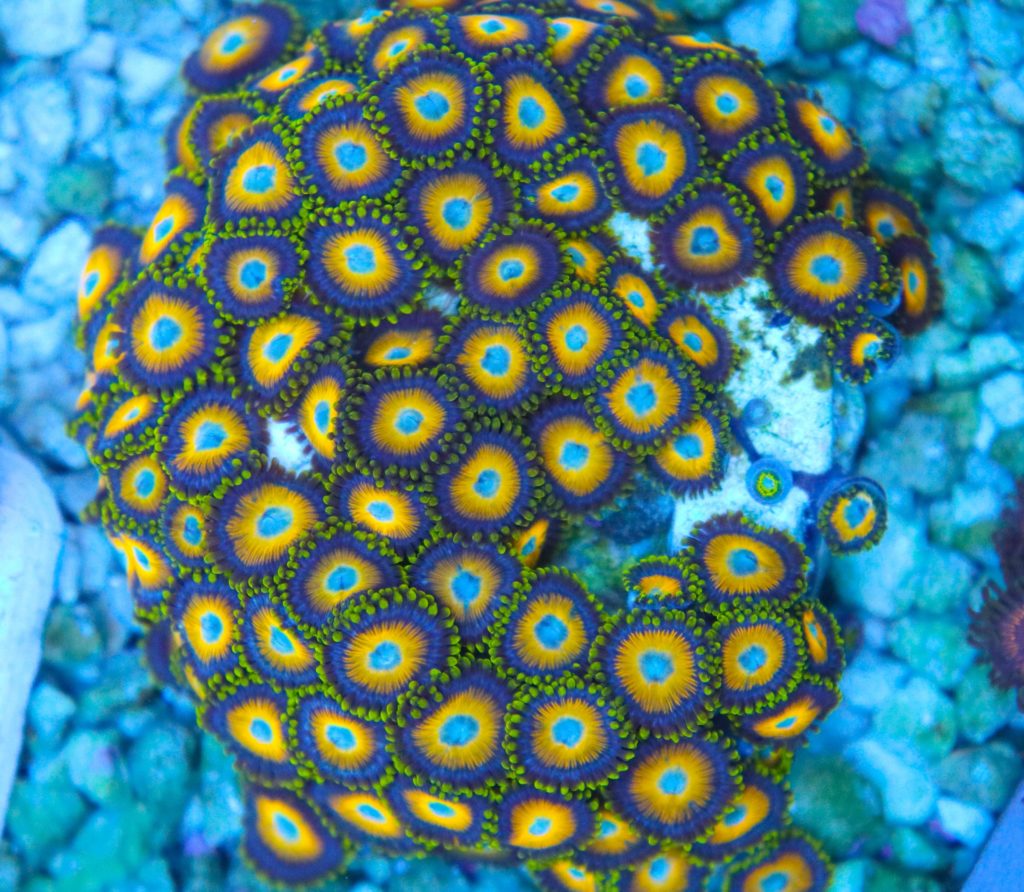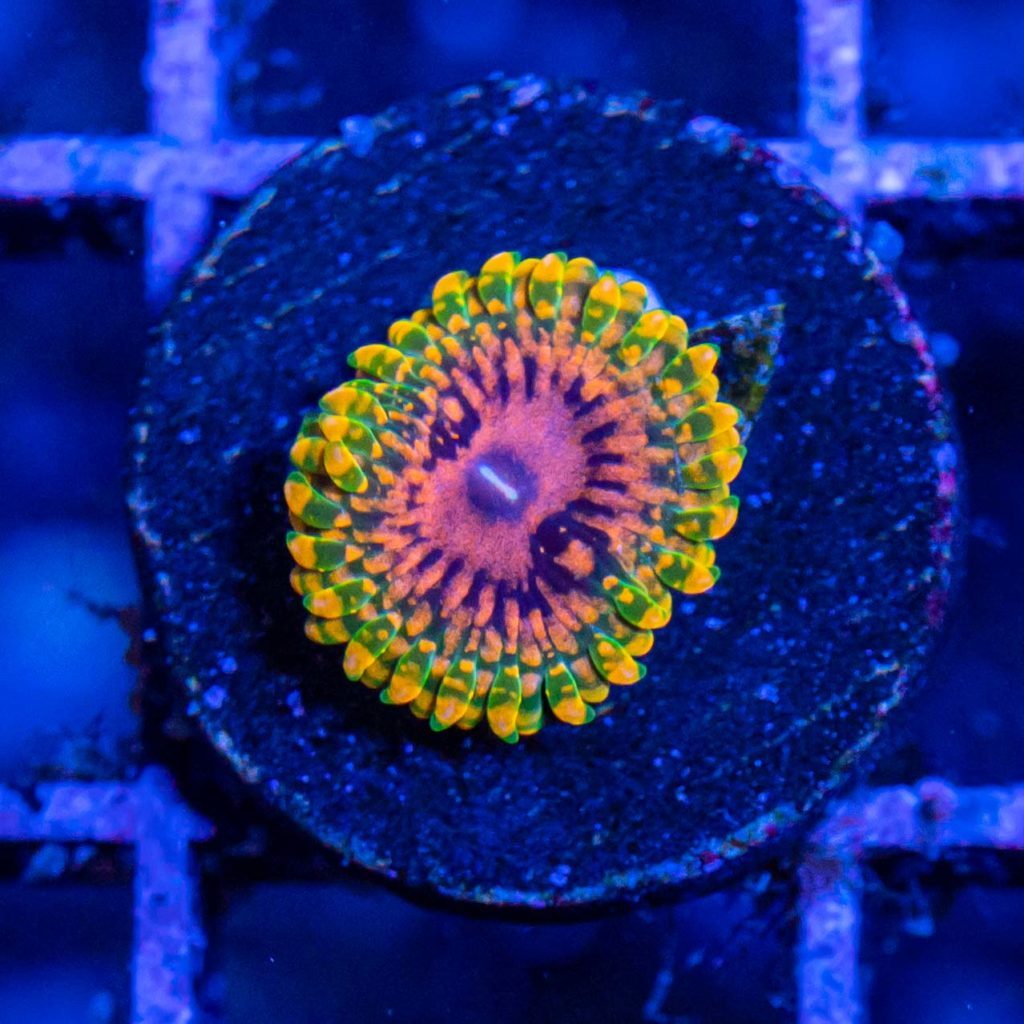Blog Posts
How to grow zoanthids
Zoanthids are a staple in any reef tank and with new colour morphs being offered regularly, reef keepers have an almost limitless number of choices. Zoas are a great choice for hobbyists of any level because of their beauty, peaceful nature and hardiness. While zoas will grow in a wide variety of tank conditions there are a few things aquarists can do to encourage their growth and get the most out of these gorgeous corals.

Water Parameters
Zoas are not picky when it comes to water parameters and will do well with standard reef tank water chemistry. While they are considered hardy, like all corals, they do best when water parameters are kept stable. In a tank with large numbers of zoas and other soft corals, it may be necessary to test iodine levels and dose as needed. Like many soft corals, zoas actually prefer slightly elevated levels of nitrate and phosphate and may grow faster when these levels are higher.
Lighting and Flow
Zoas are capable of adapting to a wide variety of lighting and flow levels, but extremely high light and flow should generally be avoided. Similarly, they should not be placed in total shadow since they are photosynthetic and require light for growth and energy. Interestingly, not all zoas prefer the same levels of light, with some preferring more light than others. If a zoa colony or frag is not doing well, sometimes moving it to an area of slightly higher or lower light will help. Zoas that are not opening may also be receiving too much flow. Zoas look great under any lighting spectrum but blue lighting will really make their colours pop!

Feeding
All zoas are photosynthetic and have the ability to meet their energy needs by utilizing the aquarium lighting. However, the vast majority of aquarists agree that they respond well to feeding, and that this will increase their growth rate and may improve colouration. They can be fed a general coral food such as Reef Roids once or twice a week. The flow in the tank should be turned off or reduced during feeding to prevent the food from being removed from the tank too quickly.
Fragging Zoas
Due to their speed of growth, fragging zoas is common but it is a bit of an art form. Since they do not have a calcified skeleton that can be cut, polyps must be scraped from the rock and glued to a frag plug or piece of rubble rock. This usually takes a few tries, but is fairly easy once mastered. The fragged polyps will soon attach themselves to the plug and begin to grow a new colony. Due to the possibility of the zoas secreting toxins when handled, it is recommended that hobbyists wear gloves and eye protection when fragging zoas.

